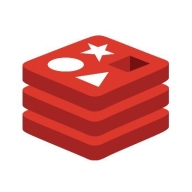

Find out in this report how the two NoSQL Databases solutions compare in terms of features, pricing, service and support, easy of deployment, and ROI.
Data migration and changes to application-side configurations are challenging due to the lack of automatic migration tools in a non-clustered legacy system.
Redis is fairly stable.
Data persistence and recovery face issues with compatibility across major versions, making upgrades possible but downgrades not active.
Since we use an open-source version of Redis, we do not experience any setup costs or licensing expenses.
It functions similarly to a foundational building block in a larger system, enabling native integration and high functionality in core data processes.


| Company Size | Count |
|---|---|
| Small Business | 29 |
| Midsize Enterprise | 23 |
| Large Enterprise | 38 |
| Company Size | Count |
|---|---|
| Small Business | 11 |
| Midsize Enterprise | 3 |
| Large Enterprise | 8 |
OpenText Analytics Database Vertica is known for its fast data loading and efficient query processing, providing scalability and user-friendliness with a low cost per TB. It supports large data volumes with OLAP, clustering, and parallel ingestion capabilities.
OpenText Analytics Database Vertica is designed to handle substantial data volumes with a focus on speed and efficient storage through its columnar architecture. It offers advanced performance features like workload isolation and compression, ensuring flexibility and high availability. The database is optimized for scalable data management, supporting data scientists and analysts with real-time reporting and analytics. Its architecture is built to facilitate hybrid deployments on-premises or within cloud environments, integrating seamlessly with business intelligence tools like Tableau. However, challenges such as improved transactional capabilities, optimized delete processes, and better real-time loading need addressing.
What features define OpenText Analytics Database Vertica?OpenText Analytics Database Vertica's implementation spans industries such as finance, healthcare, and telecommunications. It serves as a central data warehouse offering scalable management, high-speed processing, and geospatial functions. Companies benefit from its capacity to integrate machine learning and operational reporting, enhancing analytical capabilities.
Redis offers high-speed, in-memory storage, renowned for real-time performance. It supports quick data retrieval and is used commonly in applications like analytics and gaming.
Renowned for real-time performance, Redis delivers high-speed in-memory storage, making it a favorite for applications needing quick data retrieval. Its diverse data structures and caching capabilities support a broad array of use cases, including analytics and gaming. Redis ensures robust scalability with master-slave replication and clustering, while its publish/subscribe pattern renders it reliable for event-driven applications. The solution integrates smoothly with existing systems, minimizing performance tuning needs. Although documentation on scalability and security could be improved, Redis remains cost-effective and stable, commonly utilized in cloud environments. Enhancing integration with cloud services like AWS and Google Cloud and refining GUI may improve usability.
What are the key features of Redis?Redis finds application across industries for tasks like caching to improve application performance and speed, minimizing database load. It enables real-time processing for session storage, push notifications, and analytics. As a messaging platform, Redis handles high traffic and supports replication and clustering for cross-platform scalability.
We monitor all NoSQL Databases reviews to prevent fraudulent reviews and keep review quality high. We do not post reviews by company employees or direct competitors. We validate each review for authenticity via cross-reference with LinkedIn, and personal follow-up with the reviewer when necessary.